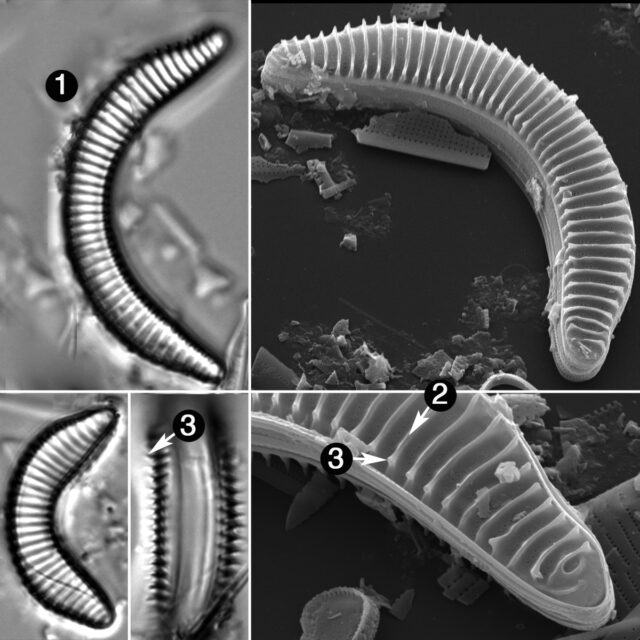Guide to Semiorbis

Credit: Mark Edlund, David Burge
- Valves strongly lunate
- Transapical, external costae
- Spines on dorsal and ventral ends of costae
Valves are strongly lunate, with thick, external, transverse costae between striae. The costae often terminate in spines at the dorsal and ventral margins. A small, greatly reduced raphe is present at the poles. The raphe is typically not visible in LM. The proximal raphe ends are on the ventral margin, while the terminal fissures curve slightly onto the valve face. Internally, the terminal raphe ends in a helictoglossa. Rimoportulae have not been observed in the genus. Striae are not visible in LM, but under SEM they can be observed between the costae. Striae are usually uniseriate, but they may become biseriate near the dorsal valve margin.
Semiorbis was regarded as a monotypic genus composed of S. hemicyclus until recently, when S. catillifera and S. rotundus were described from North America (Reid and Williams 2010). The morphology, ecology, and distribution of species was further examined (Edlund et al. 2021). Earlier authors did not recognize Semiorbis and included it within the closely related genus Eunotia (Morrow et al. 1981, Krammer and Lange-Bertalot 1991).
 Diatoms of North America
Diatoms of North America